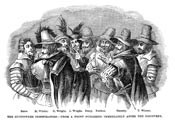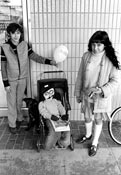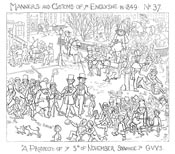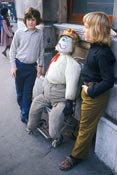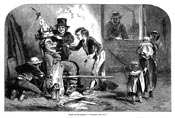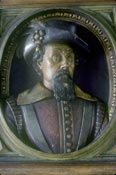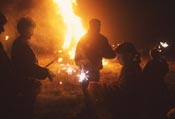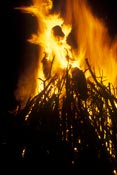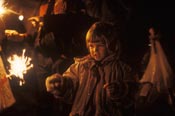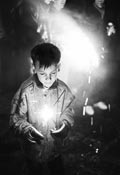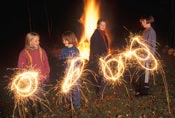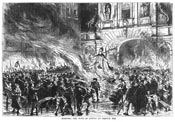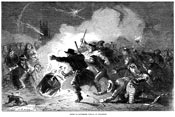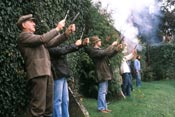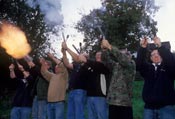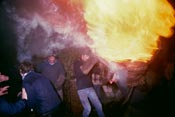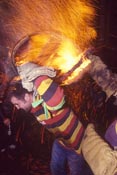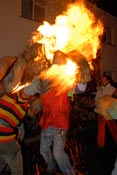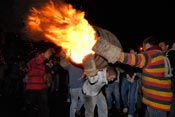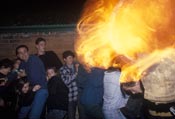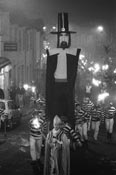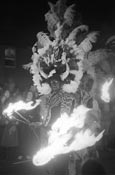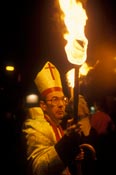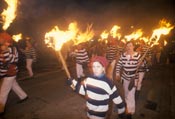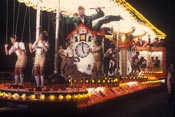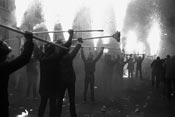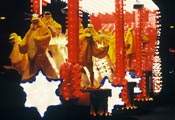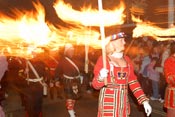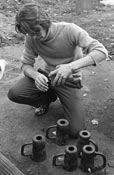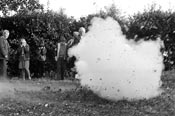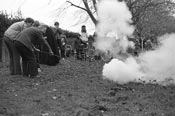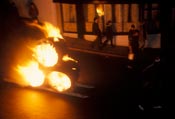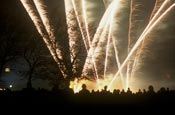
The real fires burn on, or soon after, the Fifth of November, ‘Bonfire Night’, or ‘Guy Fawkes Night’. Guy Fawkes was one of 13 Catholic conspirators (led by Robert Catesby) who planned to blow up Protestant James I in the Houses of Parliament in the hope of restoring the Catholics to power. They got as far as filling the cellar under the House of Lords with gunpowder. But the King found out, ordered a search and the ‘Gunpowder Plot’ was foiled. Fawkes happened to be the plotter on guard at the time so he was the one captured, tortured to give up the names of his co-plotters, then sentenced to be hanged, drawn and quartered. The sentence was never carried out because he killed himself trying to escape - but he did succeed in giving his own name to the most widely observed folk custom in Britain. ‘Penny for the Guy’.
While bonfires burn everywhere the plot thickens substantially in Lewes and Ottery St Mary in east Devon. Lewes Bonfire Night is five torchlight processions of costumed guisers, the burning of ‘bishops’ and effigies and five enormous bonfires in one of the largest ‘folk’ events in the south of England. There are smaller Bonfire Nights throughout November in other Sussex towns. The most alarming outbreak is in Ottery St Mary where foolhardy young men charge through the streets with flaming tar barrels on their backs. They do not burn themselves often, but when they do they bear their scars proudly. Our pictures are no exaggeration...
Hatherleigh Carnival, once on the nearest Wednesday to 5 November but now on the second Saturday in the month, begins at 5 o’clock in the morning and ends late in the evening with flaming tar barrels being pulled through the town. Many, less extreme, events happen in between. Bridgwater Carnival, currently on the nearest Friday, but from 2012 on the nearest Saturday, to 5 November claims to be the ‘largest and best illuminated procession in the world’. Originally lit by blazing torches, the Carnival has undoubtedly become the world’s largest assembly of electric light bulbs with each of 100 enormous ‘carts’ using up to 20,000 of them. The tableaux and performances take a couple of hours to pass by but the only actual fire to be seen is at the very end - and all over in about 15 seconds. However it is those 15 seconds of ‘Squibbing’ that make the whole event worthwhile.
The ‘Fenny Poppers’ have nothing to do with Guy Fawkes (or with Remembrance Day for that matter) but they are six small cannon fired three times on St Martin’s Day, 11 November, in Fenny Stratford on the SE edge of Milton Keynes, in accordance with the conditions of the will of Browne Willis who died in 1760. They are also fired on rare special occasions such as the Millennium or the Queen’s Jubilee.
